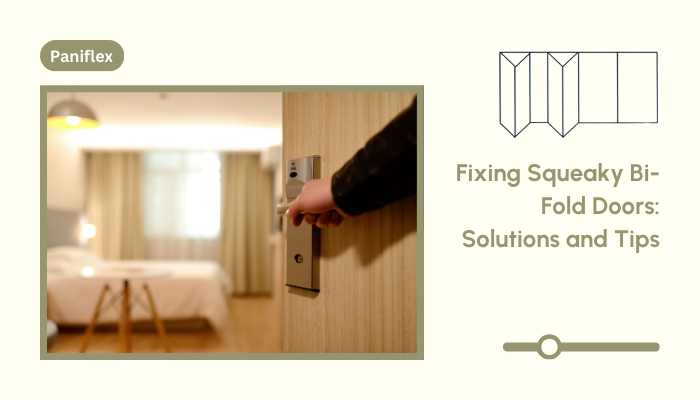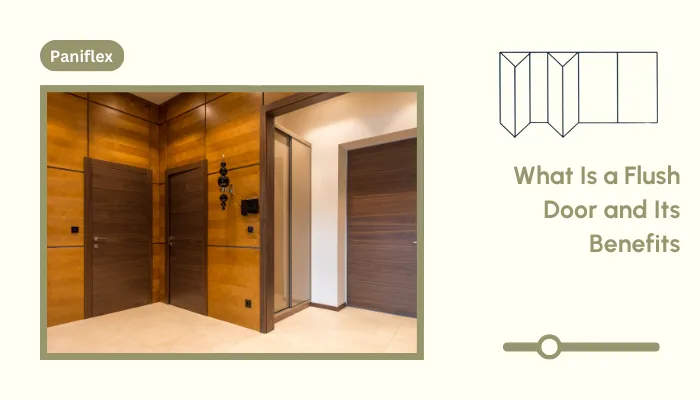You know the devil is in the details as an interior designer or architect. A beautifully designed space can be marred by something as simple as squeaky bifold closet doors. But fear not! We’re here to help you tackle this standard issue head-on. Let’s explore how to fix squeaky bifold closet doors and ensure your projects maintain that polished, professional finish your clients expect.
Common Issues Causing Squeaky Bi-Fold Doors
Before we dive into solutions, let’s identify the culprits behind those annoying squeaks:
- Dirt and Debris: Tracks and rollers accumulate dust and grime over time, causing friction and noise. This buildup can significantly impair the smooth operation of bifold doors.
- Lack of Lubrication: Moving parts create unwanted sounds without proper lubrication. The absence of a smooth, protective layer between metal components leads to friction and squeaking.
- Loose or Worn Components: Hinges, brackets, and screws may loosen or wear down over time. This wear and tear can cause misalignment and create gaps where parts rub against each other, producing noise.
- Misaligned Tracks: Improper alignment can lead to friction and squeaking. When doors don’t glide smoothly along their tracks, the resulting resistance creates those annoying sounds.
Also Read: Guide To Sizing A Rough Opening For Bifold Doors
Now that we’ve identified the problems, let’s tackle the solutions.
Cleaning Tracks and Rollers: The First Step
To begin fixing squeaky bifold closet doors, start with a thorough cleaning:
- Use a vacuum cleaner or stiff brush to remove loose dirt and debris from tracks and rollers. Pay special attention to corners and crevices where grime tends to accumulate.
- Use a damp cloth to wipe down all components and remove stubborn grime. For filthy areas, a mild detergent solution can help break down built-up grime.
- Dry the area thoroughly to prevent rust or further debris accumulation. Use a lint-free cloth to ensure no fibres are left behind that could interfere with the door’s operation.
Pro Tip: Consider recommending Paniflex’s custom bifold doors for high-end projects. Their precision engineering often results in smoother operation and less maintenance over time, thanks to their high-quality materials and construction methods.
Ready to experience the benefits of custom closet doors? Explore our range of Paniflex products now.
The Lubrication Process: Silence Those Squeaks
Proper lubrication is critical to fixing squeaky bifold closet doors:
- Use a silicone-based lubricant on tracks and rollers. Apply it evenly along the entire length of the tracks and on all moving parts of the rollers.
- Use a lubricant specifically designed for UPVC doors and windows for best results. These specialized lubricants are formulated to work well with the materials commonly used in modern door systems.
- Avoid oil-based lubricants; they can attract dust and create more problems later. Oil-based products tend to become sticky over time, potentially worsening the issue.
Designer’s Note: When working with clients, suggest a maintenance schedule that includes regular lubrication to prevent future squeaks and ensure longevity. Recommend reapplying lubricant every 6-12 months, depending on usage.
Tightening Loose Components: A Simple Yet Effective Fix
Often, the solution to squeaky doors is as simple as tightening loose parts:
- Inspect all hinges, brackets, and screws for looseness. Look for any visible gaps or movement when the door is operated.
- Use a screwdriver or wrench and tighten any loose components. Be careful not to overtighten, as this can strip the screws or damage the door.
Also Read: How to Fix a Large Gap Under the Door?
Aligning and Adjusting Tracks: Precision is Key
Misaligned tracks can be a significant source of squeaks. Here’s how to address this:
- Carefully check the track alignment. Look for any bends, warps, or areas where the door seems to catch.
- Loosen screws and reposition the tracks if necessary for proper alignment. This may require some trial and error to get it just right.
- Retighten all screws securely once the alignment is correct. Double-check the door’s operation after each adjustment.
CTA: Need perfectly aligned doors from the start? Explore Paniflex’s range of custom bifold doors for seamless operation and easy installation. Their precision-engineered tracks ensure smooth movement right out of the box.
Replacing Worn Components: When Repair Isn’t Enough
Sometimes, fixing squeaky bifold closet doors requires replacing old parts:
- Identify any severely worn or damaged components. Look for visible wear, corrosion, or deformation in hinges, rollers, and other moving parts.
- Replace these parts to ensure smooth movement and eliminate squeaks. Always use high-quality replacement parts that match the door’s specifications.
Also Read: How to Install and Replace Closet Doors
Testing and Final Adjustments: Ensuring Perfection
After applying these fixes:
- Open and close the doors to test for smooth and silent movement. Listen carefully for any remaining squeaks or rubbing sounds.
- Make any minor adjustments as needed. This might include slight repositioning of tracks or additional lubrication of specific areas.
- Reapply lubricant if necessary. Some areas require more lubrication after testing.
Also Read: Simple Steps to Install a Pre-Hung Interior Door
Ready to experience the benefits of custom closet doors? Explore our range of Paniflex products now.
Conclusion: Maintaining Silent, Smooth Operation
Learning how to fix squeaky bifold closet doors is invaluable for interior designers and architects. Regular maintenance is critical to keeping doors in top condition. Following these steps ensures your projects maintain their polish long after completion.
For those projects where only the best will do, consider partnering with Paniflex for custom bifold doors that combine style, functionality, and quiet operation. Their precision-engineered doors can elevate your designs while minimizing maintenance concerns.
Attention to these tiny details significantly affects client satisfaction and project success. Keep these tips in your professional toolkit, and you’ll always be prepared to tackle squeaky doors confidently.
Also Read: Where To Buy Custom Closet Doors?






